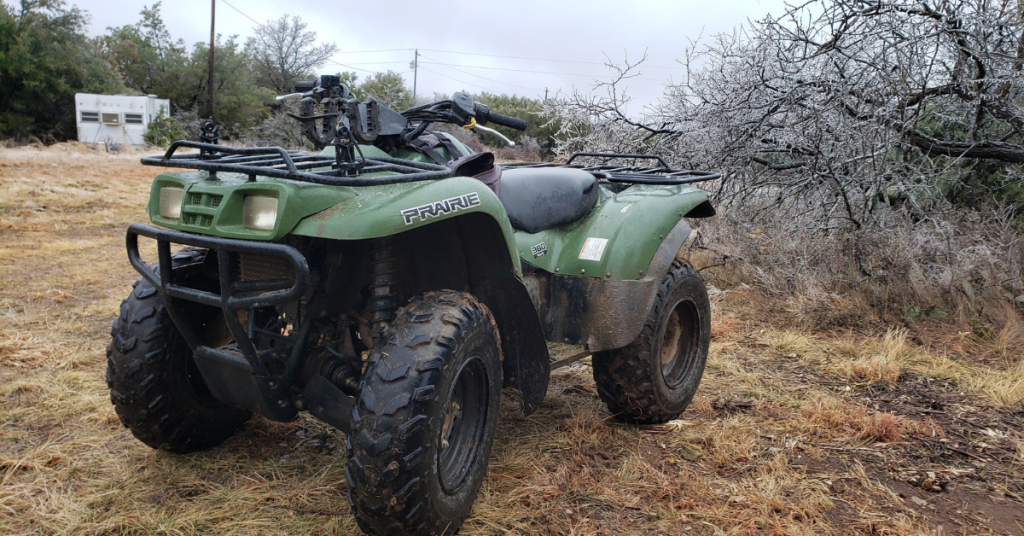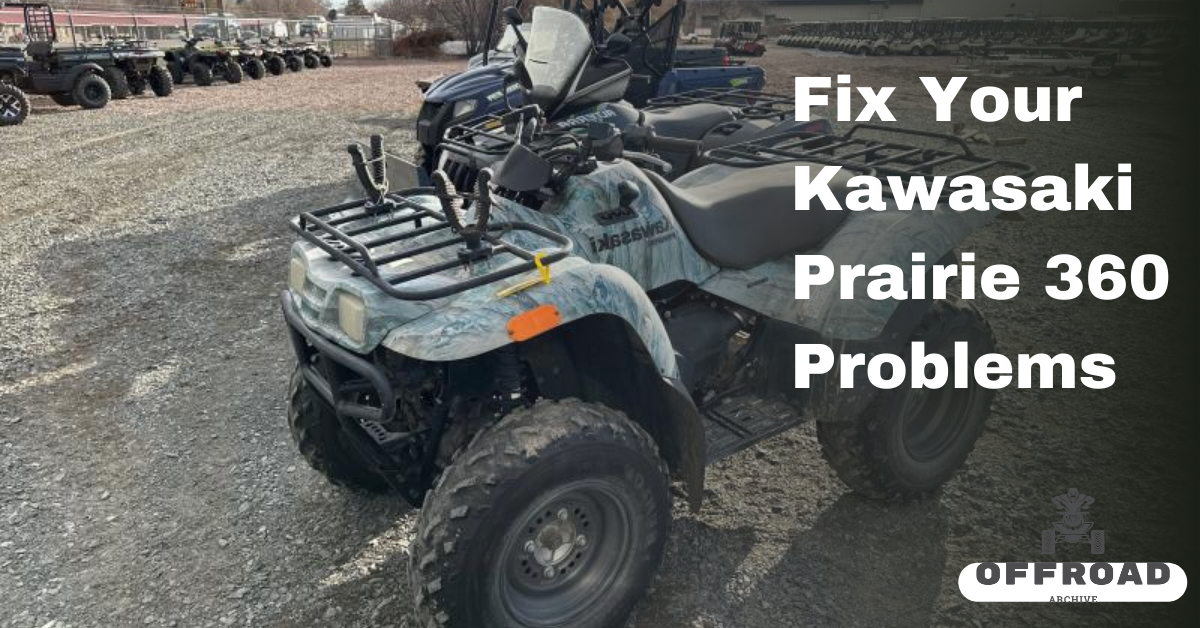The Kawasaki Prairie 360 is a well-known all-terrain vehicle (ATV) model that has been popular among off-road enthusiasts for many years. Despite its popularity, the ATV is not without its problems. Many owners have reported issues with instability when cornering, hard starting in cold weather, compression loss, and overheating. These problems can be attributed to various factors, including poor maintenance, worn-out parts, and design flaws.
Fortunately, with proper care and maintenance, most of these issues can be resolved. In this article, we will provide a comprehensive guide to fixing common Kawasaki Prairie 360 problems. We will discuss the causes of these issues and provide practical solutions to help owners get their ATVs running smoothly again.
Additionally, we will provide maintenance tips to help prevent these issues from occurring in the future. Whether you are a seasoned ATV owner or a beginner, this guide will be a valuable resource for fixing your Kawasaki Prairie 360 problems.
Table of Contents
Key Takeaways
- Tipping issue can be minimized by upgrading tires and adjusting preload settings
- Hard starting in cold weather can be solved by cleaning and upgrading pilot jets in the carburetor
- Compression loss can be caused by lack of maintenance and dirty air filter, and can be prevented by checking and adjusting valve clearance regularly
- Overheating can be caused by various issues such as clogged radiator or air pocket blockage, and can be addressed by cleaning the radiator, bypassing temperature sensor, or bleeding air from coolant system.
Kawasaki Prairie 360 Problems
Coinciding with the pre-existing knowledge, the common problems associated with the Kawasaki Prairie 360 model include instability when cornering, difficult starting in cold weather, compression loss, and overheating. These problems can be a result of various factors, such as the bulky frame and stock tires causing instability, carburetor issues leading to hard starting in cold weather, intake valve wear leading to compression loss, and clogged radiators or air pockets causing overheating.
To prevent these issues, it is important to conduct regular maintenance checks and to upgrade certain parts of the ATV. Prevention measures include adjusting preload settings, upgrading tires, regular valve clearance checks, cleaning and upgrading pilot jets in the carburetor, and cleaning the radiator.
Troubleshooting techniques, such as bypassing the temperature sensor, bleeding air from the coolant system, and replacing fouled spark plugs with high-quality iridium spark plugs, can also help resolve these issues. Ongoing maintenance and modifications can help prevent and overcome most issues associated with the Kawasaki Prairie 360 model.
Read About:
- Fix Your Kawasaki Mule SX Problems
- Fix Your Kawasaki Mule 3010 Problems Now!
- Fix Your Kawasaki Brute Force 750 Woes Now!
- Fix Your Kawasaki Brute Force 650 Problems!
Causes and Fixes

Intake valve wear caused by lack of maintenance and dirty air filters can lead to compression loss in the Kawasaki Prairie 360. This issue can be addressed by regularly checking and adjusting valve clearance. The intake valves tend to wear over time due to the accumulation of dirt and debris, which can cause the engine to lose compression. To fix this problem, the valve clearance should be checked and adjusted regularly. This simple maintenance task can significantly improve the performance and longevity of the engine.
Additionally, upgrading tires and cleaning the carburetor can help address other common problems with the Kawasaki Prairie 360. Tipping issues can be minimized by upgrading to more stable tires and adjusting preload settings. Hard starting in cold weather can be resolved by cleaning and upgrading the pilot jets in the carburetor. Regular maintenance, such as replacing fouled spark plugs and flushing old fuel, can also help prevent starting trouble. By following these tips and performing regular maintenance, Kawasaki Prairie 360 owners can keep their ATV running smoothly and avoid many common issues.
| Issue | Cause | Fix |
|---|---|---|
| Tipping | Bulky frame, stock tires, preload settings | Upgrade tires, adjust preload |
| Hard starting | Carburetor issues, clogged pilot jets | Clean and upgrade pilot jets |
| Compression loss | Intake valve wear from lack of maintenance | Regularly check and adjust valve clearance |
| Overheating | Clogged radiator, fan switch issues, air pocket blockage | Clean radiator, bypass temperature sensor, bleed air from coolant system |
| Starting trouble | Battery, grounding wires, spark plugs | Replace fouled spark plugs, flush old fuel |
Maintenance Tips
Regular maintenance is key to keeping your ATV running smoothly and avoiding common issues, such as those experienced with the Kawasaki Prairie 360. One crucial aspect of maintenance is keeping your ATV clean. Dirt and debris can accumulate on your machine, leading to corrosion, rust, and damage to parts. Cleaning your ATV regularly can help prevent these issues and extend the life of your vehicle.
Here are some cleaning techniques and recommended products:
- Use a gentle soap and warm water to clean the exterior of the ATV, avoiding high-pressure washers that can damage parts.
- Clean the air filter regularly to prevent debris from entering the engine.
- Use a rust inhibitor spray to protect metal parts from rust and corrosion.
- Lubricate moving parts, such as the chain, to prevent wear and tear.
- Use a plastic cleaner and protectant to keep plastic parts looking new and prevent cracking.
By following these cleaning techniques and using recommended products, you can help keep your Kawasaki Prairie 360 in top condition and avoid common issues. Remember, regular maintenance is key to keeping your ATV running smoothly.
Frequently Asked Questions
How much does it cost to replace the tires on a Kawasaki Prairie 360?
In terms of cost comparison, the price of replacing tires on a Kawasaki Prairie 360 can vary depending on the brand and model chosen. However, it is important to consider tire durability and choose high-quality tires that can withstand the ATV’s weight and usage.
Can upgrading the exhaust system improve performance on a Kawasaki Prairie 360?
Upgrading the exhaust system on a Kawasaki Prairie 360 can improve performance by increasing airflow and reducing weight. Installation should be done with proper tools and attention to torque specifications. Consultation with a professional may be helpful.
What is the recommended oil type and change frequency for a Kawasaki Prairie 360?
The recommended oil type for a Kawasaki Prairie 360 is SAE 10W-40 engine oil, and the oil change interval is every 50 hours of operation or every six months, whichever comes first. Oil type alternatives and tips for extending oil change intervals include using synthetic oil and changing the oil filter regularly.
How often should the air filter be replaced on a Kawasaki Prairie 360?
Air filter maintenance is crucial for optimal performance of Kawasaki Prairie 360. It should be inspected and cleaned regularly, and replaced if damaged or excessively dirty. Troubleshooting tips include checking for clogs or tears, and ensuring proper installation and sealing.
Is it possible to convert a Kawasaki Prairie 360 to run on electric power?
Electric conversion options for the Kawasaki Prairie 360 are limited, with feasibility analysis showing significant challenges and costs. While possible, it may require extensive modifications and specialized skills, making it an impractical solution for most owners.


1 thought on “Fix Your Kawasaki Prairie 360 Problems”